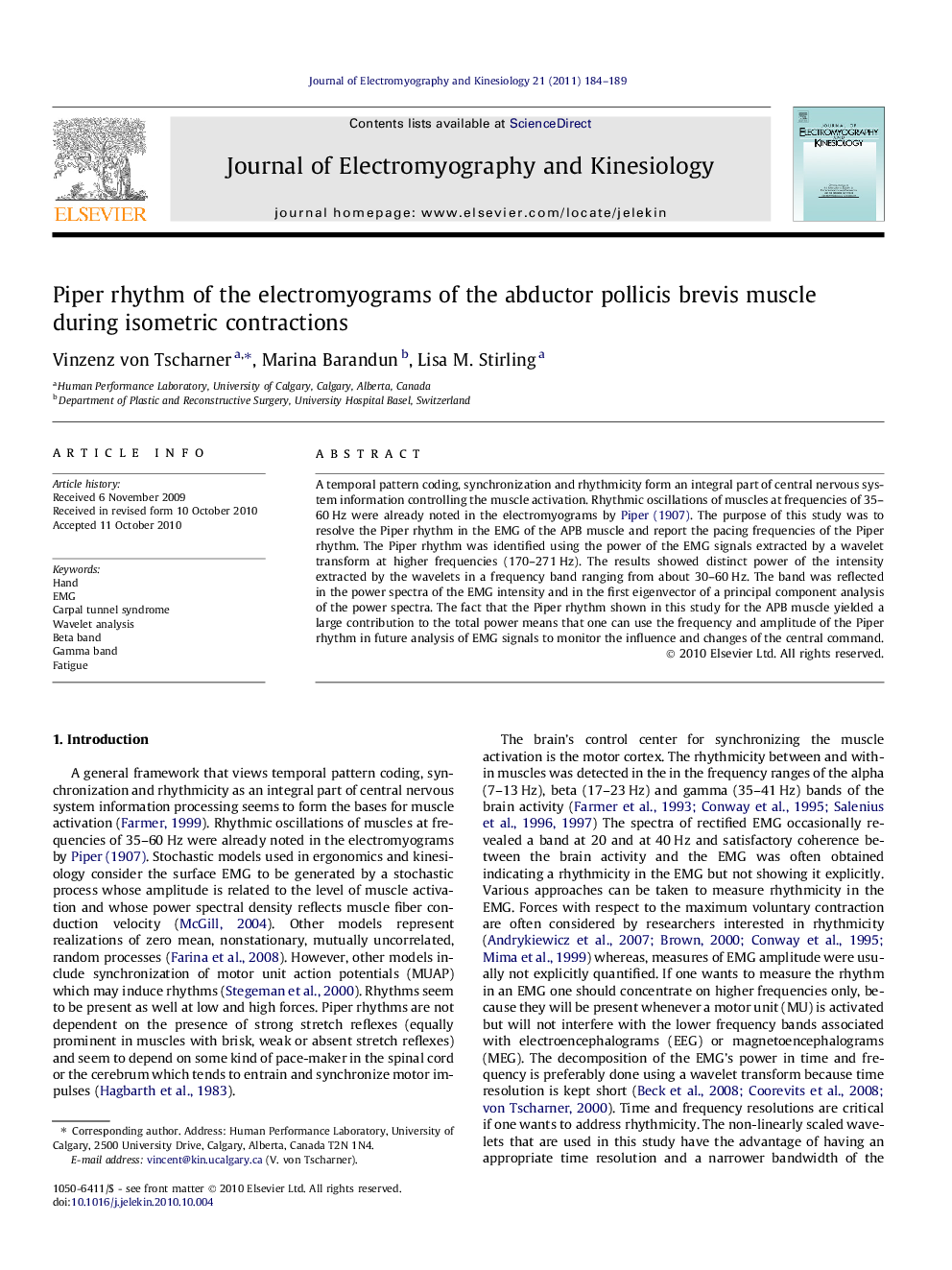| Article ID | Journal | Published Year | Pages | File Type |
|---|---|---|---|---|
| 4065113 | Journal of Electromyography and Kinesiology | 2011 | 6 Pages |
A temporal pattern coding, synchronization and rhythmicity form an integral part of central nervous system information controlling the muscle activation. Rhythmic oscillations of muscles at frequencies of 35–60 Hz were already noted in the electromyograms by Piper (1907). The purpose of this study was to resolve the Piper rhythm in the EMG of the APB muscle and report the pacing frequencies of the Piper rhythm. The Piper rhythm was identified using the power of the EMG signals extracted by a wavelet transform at higher frequencies (170–271 Hz). The results showed distinct power of the intensity extracted by the wavelets in a frequency band ranging from about 30–60 Hz. The band was reflected in the power spectra of the EMG intensity and in the first eigenvector of a principal component analysis of the power spectra. The fact that the Piper rhythm shown in this study for the APB muscle yielded a large contribution to the total power means that one can use the frequency and amplitude of the Piper rhythm in future analysis of EMG signals to monitor the influence and changes of the central command.
